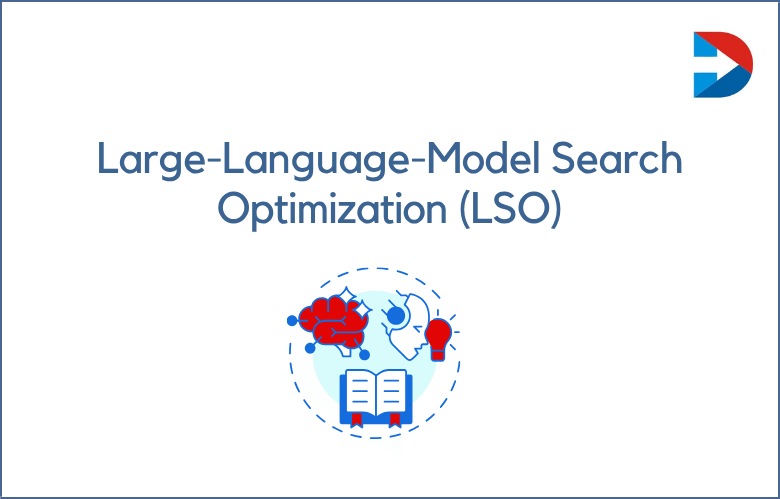
In today’s competitive digital age, email marketing automation and analytics can be powerful tools to help businesses maximize their return on investment, boost revenue, and drive growth. By leveraging these tools, marketers can gain insights into their campaigns, target the right people, personalize content, and achieve their business goals. We will discuss how to effectively use email marketing automation and Google Analytics to help your business thrive.
Choose the Right Email Marketing Tool
The first step in creating effective email marketing campaigns is selecting the right tools. Several email marketing tools are available in the market, such as Mailchimp, Constant Contact, and Campaign Monitor. Each tool is unique and has different features and pricing options.
When choosing a device that suits you, you need to consider your business needs, the size of your subscriber list, and your budget. Mailchimp is a popular option that offers advanced automation features like abandoned cart recovery, product recommendations, and post-purchase follow-up emails.
Tailor Your Content to Your Audience
Once you have selected the right email marketing tool, the next step is to personalize your content according to your audience’s needs. People love seeing relevant, personalized content that resonates with their interests and pain points.
Personalized emails have higher open and click-through rates and can result in more sales. You can segment your audience based on demographics, behavior, and interests and send tailored messages, offers, and recommendations based on their preferences.
Measure Your Email Campaigns with Google Analytics
Google Analytics can be a valuable tool in measuring the effectiveness of your email campaigns. You can track the performance of your email campaigns, subscriber behavior, and conversion rates. You can create custom reports to track email subscribers’ behavior on your website, such as pages visited, time spent, and bounce rates. This information can help you optimize your email campaigns and website’s user experience to increase conversions.
Set up Automated Campaigns
Email marketing automation can save time and effort while delivering personalized messages to your subscribers. You can set up automated campaigns to welcome new subscribers, follow up on abandoned carts, promote product launches, and more. Automated campaigns can be triggered based on user behavior, such as purchases, clicks, and sign-ups. You can use automation to build long-term relationships with your subscribers.
Test and Optimize Your Campaigns
Testing and optimizing your email campaigns is crucial to improving your ROI. You can test different elements of your campaigns, such as subject lines, images, call-to-actions, and landing pages, to optimize for higher open and click-through rates. You can monitor the performance of your campaigns and make adjustments based on the data to improve your results over time.
The Power of Email Marketing Automation: Boosting ROI with Google Analytics
Email marketing automation has become essential for businesses to increase customer engagement and generate more revenue. According to studies, automated emails have a 119% higher click-through rate than regular promotional emails, making them an effective way to boost ROI. One of the key advantages of email marketing automation is the ability to track and analyze customer behavior with the help of Google Analytics.
Businesses can gain valuable insights into customer behavior and preferences by integrating Google Analytics with email automation platforms like MailChimp. This enables marketers to tailor their email campaigns to customer interests and preferences, increasing engagement and conversion rates. For example, by tracking customer clicks and website visits, businesses can identify which products or services are most popular and target their email campaigns accordingly.
Squeeze Every Bit of ROI: Email Marketing Automation and Google Analytics in Perfect Harmony
Email marketing automation and Google Analytics are powerful tools marketers can use to maximize return on investment (ROI). When these two tools are integrated, marketers can extract valuable insights that help them to fine-tune their campaigns and optimize every aspect of their email marketing strategy.
One of the key advantages of email automation is that it can significantly increase the efficiency of your marketing efforts. By setting up automated campaigns, you can save time and resources while delivering targeted and personalized messages to your audience.
With Google Analytics, you can track the performance of your email campaigns, including open rates, click-through rates, and conversions. This data can help you better understand what works and doesn’t, allowing you to refine and optimize your email content for maximum impact.
Cracking the Code to High ROI: Unleashing Email Marketing Automation and Google Analytics
Email marketing has been around for quite some time as a fundamental tool for businesses to magnify their revenue. However, with the increasing competition and dynamic trends in marketing, more than merely sending out newsletters and promotional emails may be required to yield a high return on investment (ROI). This is where Email Marketing Automation and Google Analytics come into play.
Email Marketing Automation refers to the use of technology to automate and streamline the process of sending emails. It allows businesses to segment their subscribers based on interests, behaviors, and demographics. This makes personalized and targeted emails more likely to convert into sales and revenue.
ROI on Autopilot: How Email Marketing Automation and Google Analytics Work Hand in Hand
In today’s fast-paced digital world, businesses must keep up with the competition by implementing marketing automation strategies that provide a high return on investment (ROI) without requiring extensive manual work. Email marketing automation is one such technique that, when integrated with Google Analytics, can work hand in hand to optimize ROI.
Email marketing automation uses email lists, templates, and triggers to automate email campaigns based on a customer’s behavior or preferences. Google Analytics, on the other hand, tracks website visitor behavior, such as clicks, bounce rates, and session durations. Combining the two provides valuable data points on customer behavior, enabling businesses to deliver targeted content and offer on-time, personalized promotional messages to increase conversions.
Unlocking the ROI Potential: Harnessing Email Marketing Automation and Google Analytics
Email marketing automation has become an indispensable tool for businesses that want to unlock their ROI potential. With the rise of e-commerce and digital marketing, companies must rely on data-driven strategies to optimize their revenue and conversion rates. Email marketing automation allows businesses to segment and target their audience with personalized messages that increase engagement and drive more revenue.
However, the success of email marketing automation depends on data analytics and tracking. This is where Google Analytics comes into play. Google Analytics is a powerful web analytics tool that can help businesses track and measure the performance of their email marketing campaigns. With Google Analytics, companies can get insights into website traffic, conversion rates, customer behavior, and more.
Conclusion:
Email marketing automation and Google Analytics can maximize your ROI, engage with your subscribers, and grow your business. By selecting the right email marketing tools, personalizing your content, measuring your campaigns with Google Analytics, and setting up automated campaigns, you can drive conversions, increase revenue, and build lasting relationships with your subscribers. The power is in your hands – start leveraging these tools today to take your email marketing campaigns to the next level.
Maximizing ROI with Effective Email Marketing Automation and Google Analytics: FAQs
What Is Email Marketing Automation?
Email marketing automation uses software to automatically send personalized and timely emails to subscribers based on predefined triggers, actions, or time schedules.
How Does Email Marketing Automation Improve ROI?
It boosts ROI by reducing manual work, increasing email relevance, enhancing user engagement, and more effectively nurturing leads with targeted content.
What Role Does Google Analytics Play In Email Campaigns?
Google Analytics helps track user behavior after clicking email links, allowing marketers to measure campaign effectiveness, conversion paths, and user engagement.
Why Is Audience Segmentation Important In Email Automation?
Segmentation ensures that emails are relevant to specific user groups, which increases open rates, click-throughs, and conversions, thereby improving overall performance.
How Can Trigger-Based Emails Help Conversion Rates?
Trigger-based emails are sent based on user actions, such as cart abandonment or signup, offering personalized follow-ups that guide users down the conversion funnel.
What Metrics Should Be Tracked In Email Campaigns?
Key metrics include open rate, click-through rate, bounce rate, conversion rate, unsubscribe rate, and Google Analytics metrics like session duration and goal completions.
How Can A/B Testing Be Applied To Email Campaigns?
A/B testing allows marketers to experiment with subject lines, email content, design, and CTAs to determine which versions generate the highest engagement and ROI.
What Are Common Mistakes In Email Marketing Automation?
Frequent errors include over-automation, poor segmentation, generic content, ignoring mobile optimization, and not aligning emails with user journey stages.
How Does Google Analytics Help Identify Top-Performing Emails?
By linking email traffic to user behavior on your website, Google Analytics shows which emails lead to the most conversions, engagement, and revenue.
Can Email Automation Be Integrated With CRM Systems?
Integrating email platforms with CRMs allows for seamless data flow, better segmentation, personalization, and lead scoring for more effective campaigns.
How Do You Set Goals In Google Analytics For Email Campaigns?
Goals can be set up in GA by defining specific actions, such as form submissions, downloads, or purchases, and then tracking those actions triggered via email clicks.
Why Is Personalization Critical In Email Automation?
Personalization increases relevance and connection with the recipient, leading to higher engagement rates and better ROI.
What Is The Role Of UTM Parameters In Email Tracking?
UTM parameters appended to email links allow Google Analytics to track where the traffic came from, helping distinguish email campaigns from other sources.
How Often Should Email Campaign Performance Be Reviewed?
Performance should be reviewed regularly, weekly, or monthly based on the campaign goals to make timely adjustments and improvements.
How Can Behavior-Based Targeting Improve Email Effectiveness?
It uses user behavior (like past purchases or site visits) to send relevant messages, which increases engagement and reduces unsubscribes.
What Tools Can Be Used For Email Marketing Automation?
Popular tools include Mailchimp, ActiveCampaign, HubSpot, Klaviyo, and Drip, many of which integrate with Google Analytics for performance tracking.
How Do Drip Campaigns Work In Automation?
Drip campaigns are pre-written email sequences sent to users over time based on triggers. They help nurture leads and build trust.
What Is The Difference Between Email Blasts And Automated Emails?
Email blasts are one-time mass emails sent to a list, while automated emails are personalized and triggered by user behavior or time schedules.
How Can You Reduce Unsubscribe Rates In Email Campaigns?
Unsubscribe rates can be minimized by providing relevant content, setting correct expectations, using proper frequency, and allowing easy preference management.
How Do You Align Email Campaigns With Business Goals?
Define clear KPIs, segment the audience, create targeted messaging, and use analytics to measure how each campaign contributes to sales or user engagement.




